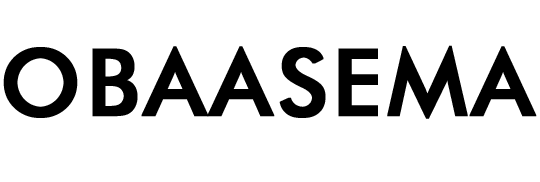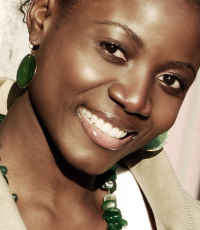Acne, also called pimples, zits or spots, must be the most common skin disease globally. For reasons we will come to understand later, the condition occurs more during adolescence, with over 85% of teenagers believed to suffer from acne. I am sure many of you have personal stories of your own battles or embarrassing memories of those black spots rearing their ugly heads the night before a big date or the high school photo shoot. My own memories involve spending hours in the bathroom scrubbing my face and using cocoa butter moisturizer twice daily—a recipe my more experienced cousin had told me got her through her own awkward puberty phase.
However, it seemed that the more I scrubbed, the more the little monsters plagued my face and wreaked havoc on my self-confidence. Desperate, I tried one natural concoction after another and then started investing hard-earned money on cosmetic facial cleansers that promised to make my zits disappear in a twinkle of an eye. Years later, and hundreds of dollars poorer, I learnt that my remedy lay in something very simple.
So, what is acne?
Contrary to popular belief, acne is not caused by dirt. It does have to do, though, with excess oil (sebum) production by the sebaceous glands of the skin which leads to the clogging of pores. Scientists believe that the increased oil production occurs during puberty when levels of the male hormone testosterone increases in response to signals from the brain. Testosterone causes the sebaceous glands to enlarge, thereby increasing the amount of oil produced. Sometimes, bacteria get trapped in the blocked pores leading to infections or inflammation. Acne lesions can occur on the face, neck, chest and back. Generally, they can be divided into 2 broad groups called non-inflammatory and inflammatory.
Non-inflammatory (comedones):
Non-inflammatory is the more common form of acne made up of what are commonly known as whiteheads and blackheads. As the name suggests, whiteheads appear as white spots and occur when the trapped sebum remains underneath the skin surface. Blackheads, on the other hand, are formed when the sebum manages to get out on to the skin surface. It interacts with oxygen in the air, which oxidizes the melanin skin pigment in the sebum and changes into a brownish-black color. Since it takes a long time for the sebum to drain out of the pore, blackhead lesions tend to last longer than whiteheads. Both forms can heal on their own when they release their contents naturally or the blockage in the pores resolves. However, if the wall of the pore ruptures spontaneously or due to picking at the spots, they can convert into inflammatory acne (see below). As such, restraining from picking or touching pimples/zits is important to prevent worsening of the lesions.
Inflammatory acne
There are four types of inflammatory acne that correspond somewhat to level of severity but only three will be discussed. A papule is formed when the wall of the blocked hair follicle breaks causing accumulation of white blood cells in the pore. White blood cells are an important part of the body’s immune system that fights against diseases. One way they do this is by causing inflammation. The white blood cells move to the surface of the skin over several days leading to formation of a pustule. It is this pustular stage that many call a pimple or zit. Depending on how much inflammation occurs or if the wall of the follicle breaks down completely, a painful nodule or cyst can form. Nodules are more like large, hard, sore bumps while cysts are pus-filled lesions formed from severe inflammatory reactions. Cystic acne is more common in males than females.
Why do women have acne?
As mentioned earlier, increased testosterone during puberty plays an important role in acne formation. Also, hormonal changes linked to the menstrual cycle cause an almost cyclic occurrence of acne, which appears a couple of days before the cycle begins and clears up once the cycle is over. Not surprisingly, processes which interrupt the hormonal cycling such as pregnancy and menopause can stop acne breakouts. As we grow older, the amount of testosterone produced in women levels off leading to less acne break out. By mid-twenties, most women will have no acne problems. However, some women have acne for many more years, even into their late 40s, from reactions to make-up, hormonal pills (e.g. contraceptives), medicines, excessive friction on the skin (which argues against excessive facial scrubbing as a treatment) and family history.
Understandably, acne for all women can be both physically and emotionally draining, especially in a global culture that focuses on image. Teenagers trying to fit into social groups battle with low self-esteem, poor body image and depression. This leads to increased shyness, social withdrawal, and lower school performance.
How to get rid of those trouble spots
Several myths regarding the causes of acne and ways of getting rid of it have been passed down from generation to generation. Since the oil is blocked underneath the skin surface, trying to wash away or reduce surface oil with harsh chemicals does not work. Neither does denying oneself chocolates or greasy foods. That being said, eating a healthy diet and maintaining general hygiene are good ways to take care of our bodies and should be encouraged. What has been found to be helpful in treating mild acne is washing your face twice daily with warm water and a gentle cleanser or soap to keep pores open. If this doesn’t work, talk to your doctor or dermatologist for suggestions on suitable over-the -counter lotions or creams. Your doctor might prescribe creams containing benzoyl peroxide (reduces oil production by the sebaceous glands) or salicylic acid (breaks down whiteheads and blackheads). If symptoms last more than six weeks, discuss trying a different treatment. For more severe forms of acne such as cysts, consult a dermatologist, who might prescribe retinoic acid or accutane treatment. Both drugs can cause birth defects and should not be used while pregnant or if planning on becoming pregnant. You will be required to use two forms of birth control while using these drugs. Other side effects include mood changes, itchy and dry eyes, and changes in the blood and liver tissue. Given the major side effects, either drug should be started only after weighing personal advantages and disadvantages with your doctor.
Hopefully, knowing that acne affects almost everyone regardless of race, gender, economic status or popularity, will make it easier to deal with the associated emotional and self-image issues. One does not have to succumb to the media advertising surrounding costly facially cleansers which don’t offer relief. With a little patience, you will soon outgrow this right of passage and be acne-free!
Sources:
http://www.acne.org/whatisacne.html
http://en.wikipedia.org/wiki/Acne_vulgaris
http://www.4woman.gov/faq/acne.cfm

